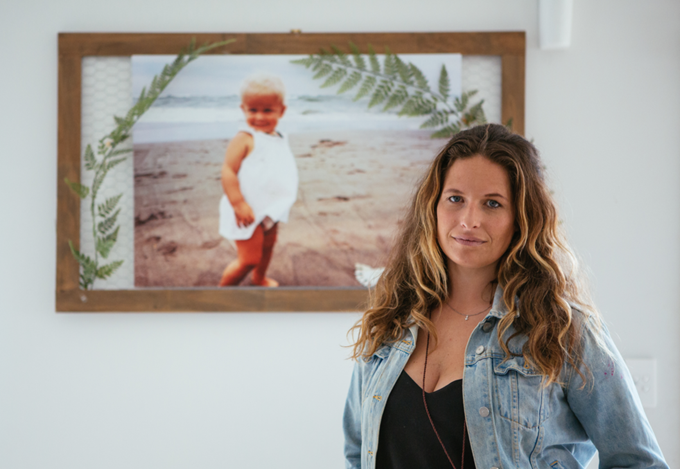After losing her two-year-old daughter in a home pool drowning in 2017, Chantal Kerlin is sharing her story to encourage parents to educate themselves around pool safety.
Her "little pocket rocket”, Saylor Rose, was found unconscious in a friend's pool in October 2017. She died four days later surrounded by friends and family at Starship Children’s Hospital’s intensive care unit.
Saylor Rose was one of an average of three pre-schoolers who die in home pool drownings in Auckland every year.
Like many Auckland families, the Kerlin family love swimming and being near the water. So it was hard for Chantal to comprehend that’s what took Saylor Rose’s life.
“Of course, you want your children to have the freedom to explore, but when it comes to water we can’t be casual,” says Chantal in support of the council’s summer pool safety messages around maintaining fences and gates and always having someone supervising children in pools, even if they’re only shallow portable ones.
The leading causes of pre-school children drowning in pools are unsupervised access to pools through faulty gates and barriers, ladders left against the pool and gates propped open, and small portable pools remaining full of water without supervision or a complying barrier.
To prevent these drownings, the council is urging parents to become backyard lifeguards this summer.
For Chantal, this means having all the safety checks in place and being present with your children around water.
“Owning a pool comes with huge responsibility. Just like wearing a seat belt in a car, if you have a pool you need to have all the safety checks in place including a compliant pool barrier and gate.”
Her message to other busy parents is to educate themselves.
“I didn’t know through all my education in swim safety that drowning is silent. It’s not what you see on movies and television, and it happens within minutes,” she says.
“First and foremost, know your environment—whether it’s your own home or not, make sure the pool is secure and safe. And be present: in the time it takes to make a short-phone call or scroll on your phone a child can die.”
Pool incidents can lead to life-long problems
Starship Children’s Health director Dr Mike Shepherd says that even if children survive drownings, they can suffer life-long problems.
“At least once a month a child is sustaining a brain injury as result of drowning – some kill kids, some leave kids brain damaged with life-long problems, and the lucky ones escape without injury,” he says.
Dr Shepherd says the best thing adults can do to avoid tragedies is to restrict unsupervised access to pools.
“Anyone that’s looked after a preschooler for a day knows that it’s very difficult to keep them in your sight 24/7, and it can take as little as 20 seconds to drown.”
Dr Shepard says children are naturally drawn to water, and learn through exploring their environment, so it’s important children can’t access swimming pools when you’re not watching.
“Things like compliant fencing and well-functioning, self-closing and self-locking gates, as well as emptying temporary pools when they aren’t being used are hugely important, and that’s the responsibility of the pool owner,” he says.
Is your pool safe?
More than 30,000 pools are registered with Auckland Council. All pools require safety inspections every three years, and the council urges pool owners to carry out their own maintenance and inspections more regularly, to ensure ongoing safety.
Jeff Fahrensohn, who manages Auckland Council’s pool inspection teams, says, “since inspections started, child drownings in New Zealand have dropped from 12 to about three per year.
Fahrensohn says over 40 per cent of the inspections fail because of basic lack of maintenance, so it’s important that pool owners get out and check their fencing.
The biggest causes of inspection failures are faulty gates, and climbable objects, such as pots and garden furniture, too near the pool fence.
To see if your pool is safe, you can find our full inspection checklist and safety videos online.
Active supervision
Davin Bray of Drowning Prevention Auckland says active supervision of children at all times is crucial to prevent pool drownings and accidents.
Active supervision means children are within sight and reach and supervisors are not distracted.
“Drowning is silent – there is no splash or scream to alert you. As a father I know how quickly things can happen with children, who are inquisitive and naturally drawn to water,” he says.


